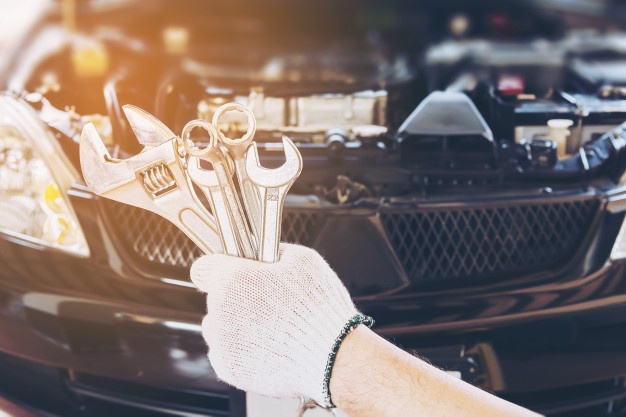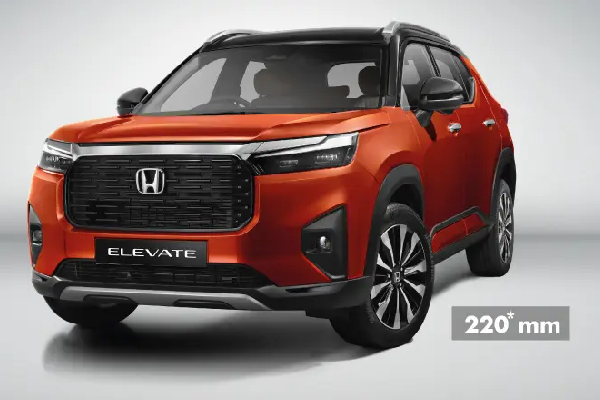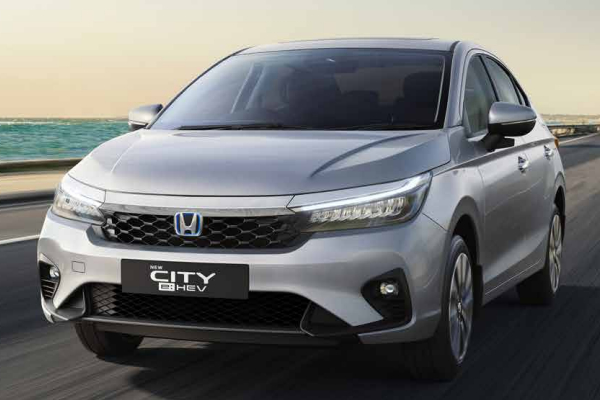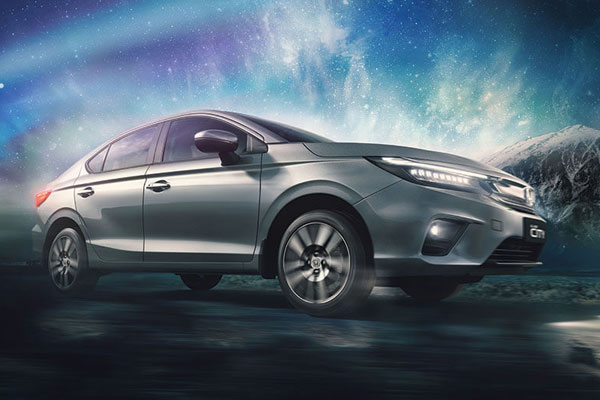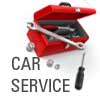Types of Automatic Transmission
1. Traditional Automatic Transmission
It also is known as self-shifting transmission, n-speed transmission or torque converter automatic, this is the standard type of automatic transmission to be found in most of the cars these days. Unlike a manual gearbox, it does not use a clutch to change gears. Instead, a hydraulic fluid coupling or a torque converter does this job. It connects to the Electronic Control Unit of the engine and allows for precise control of the vehicle.
It is a type of transmission that automatically changes gear ratios as the vehicle moves. The benefits of an AT center on giving drivers freedom from shifting gears manually. Other advantages include a smooth and precise engine control. Note that AT can be found in many non-MT vehicles.
Automatic cars perform smoothly, but the shifting of the gears is not quick all the time, earning them the name ‘slush box’. The impression has been changing though, thanks to some brilliant transmission models such as the ZF 8-speed, which you will find in many performance cars ranging from Jaguars to BMWs.
2. Automated-Manual Transmission
Also known as semi-automatic transmission (SAT) or paddle-shift gearboxes, a semi-automatic transmission is a type of automatic transmission that it involves the driver making gear changes similar to a manual transmission.
However, it does not have a clutch unlike an MT, and it makes use of electronic equipment such as sensors, actuators, and processors to simulate manual and make gear change precise and smooth.
This automatic transmission type utilizes a regular clutch and gear setup but automates the action by the use of sensors, actuators, processors, and pneumatic.
The cars featuring this transmission provide better performance on highways. They are not recommended for city driving because the engines feel jerky under hard acceleration.
3. Continuously Variable Transmission (CVT)
A continuously variable transmission or CVT is technically another type of automatic transmission.
However, it does not use mechanical gears unlike an AT and instead, makes use of belts or pulleys to enable seamless gear shifting based on ratios and depending on engine speed.
Compact design and strapless acceleration are some of the advantages of a CVT while different engine feel and cost are some of its downsides.
It allows seamless gear shifting with numerous range of ratios and facilitates the engine to spin at the maximum RPM (speed).
Two more types of CVT are there. The Hydrostatic CVT uses hydrostatic motors and variable-displacement pumps for transferring power to the engine. On the other hand, the Toroidal CVTs use discs and power rollers for this purpose.
The transmission allows the engine to operate at the maximum efficiency with seamless acceleration. It is good for fuel economy, and the repair and maintenance are not expensive.
Plenty of models use this gearbox, and some of the crowd favorites are Honda Civic, Honda Accord, Chevrolet Spark, Ford C-Max, Nissan Sentra, and more.
4. Dual-Clutch Transmission (DCT)
Another type of automatic transmission is the dual-clutch transmission system or DCT.
Also known as a twin-clutch transmission or a double-clutch transmission, it does not have a torque converted and primarily involves the use of two separate clutches for odd and even gear sets, thus allowing a seamless shift to higher and lower gears.
It also does not have a clutch pedal and instead, a computer operates both clutches. Hence, it offers the ease of an AT with the performance of an MT.
It is a hybrid of the automatic and manual transmission.
There is no torque converter in DCT. You will use two separate shafts for gear changing, one for odd-numbered and another for even-numbered gears.
Both the shafts have their own clutch.
You can shift to a higher or lower gear in a fraction of second and the transformation from automatic to manual is also seamless.
However, the DCT gearboxes can’t escape the complaints of noisy clutches, scratching sound, and rough shifts.
5. Direct Shift Gearbox (DSG)
It is almost similar to the DCT but without its annoying problems.
It uses two clutches instead of a torque converter, and its mechanism works by simple disengaging of one clutch and engaging the other second one for changing the gears.
This transmission offers faster gear shifting and smoother pulling away than the traditional models.
Modern DSG units provide better fuel efficiency than even the manual gearboxes.
The DCT is a dry transmission that does not need the driver to change the gearbox fluid ever.
It leaves the clutches dry and wears out their frictional quality eventually.
The results are abrupt shifts, slow responses to gear shifting, and jerky transmission.
On the other hand, DGS is a wet transmission that keeps the clutches lubricated.
The result is decade-long service with lighting gear-changing performance.
However, you have to change the fluid on a regular basis (every 40k miles), which could be costly.
Many automobile manufacturers such as Skoda, VW, Porsche, and Audi use this model in their cars but under different names.
For example, Porsche calls it PDK gearboxes while the name changes to DSG S-Tronic units for Audi models.
6. Tiptronic Transmission
It is one of the automatic transmission types that functions just like a manual gearbox.
However, it’s different from manual operation in the sense that it uses a torque converter in the place of a clutch pedal, does have the option for auto shifting, and does not let the driver have full control over the gears.
A Tiptronic transmission gives a driver an option to drive either in automatic mode or manual mode. Introduced by Porsche in the 90s and adopted by other manufacturers soon after, this type of automatic transmission has no clutch but, when used in manual mode, it allows direct upshift and downshifts selection using paddled behind the steering wheel or by using the gear lever itself. When used in automatic mode, the computer does the gear shifting.
What unique about this unit is it has the option to override the automatic mode. It means that you can drive your car as an automatic along with being able to switch into the manual mode when required such as getting up a hill or going downward in a steep road.
The cars using this unit has an inbuilt safety feature so that any driver error does not result in the damage of the gearbox. A number of manufacturers use this type of automatic transmission but it was first seen in Porsche 911 (in 1990) and then adopted by BMW and Chrysler.
Also read: Torque Converter: Functions, Parts, Working Principles, and Types
Back to All Car Maintenance Tips, Tricks, Article, Resources
To Know More About Honda Car Acessories Center in Mumbai Visit Solitaire Honda Mumbai, Contact us at 022 67385588 or email us at sales@solitairehonda.com
Share This:



